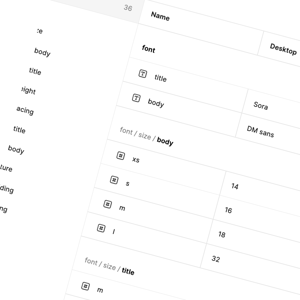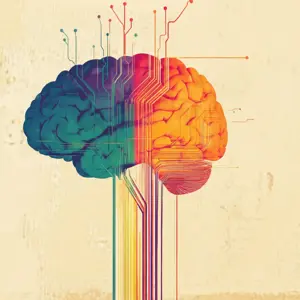Natural language processing, or NLP, is a type of artificial intelligence that allows computer systems to interpret human language and generate their own responses. Essentially, it's this branch of AI that enables computers and humans to communicate in a natural manner. Rather than formatting our inputs in a way that a computer can understand, we can converse with NLP-based systems in the same way we would with another human being.

At a fundamental level, NLP works in much the same way as any type of computer science does. When we perform a normal query in a database, for example, the search function examines the database for results that match our query. With NLP, however, everything is scaled up. The solution is not simply working with the information in the database and looking for exact matches — it is drawing upon vast stores of data and inferring deeper meaning from the input.
To do this, the solution needs a profound understanding of human language. It needs to recognise relationships between words, understand how meaning shifts in different contexts, and identify the different structures that make up human language. Through extensive training and analysis, innovative solutions are able to understand the input provided to them and generate a response based on this.
NLP use cases
As NLP grows more capable, the potential advantages are very exciting. But how can NLP be applied, and what are the universal NLP use cases that basically any business can use?
Customer service chatbots
Natural language processing has elevated customer service chatbot capability. These bots used to be simple interfaces between the customer and an information repository — little more than a form of search engine.
With NLP, these solutions can recognise user intent, understand whether their sentiment is positive or negative, and assess the context of the query. This is on top of extracting the key entities from the query, which are then used to resolve customer issues.
Summarising text
Text summarisation can be either extractive or abstractive. Extractive summarisation, as the name suggests, simply involves identifying the most important sections of a passage and excising other sections. If this is handled by an automated system, that system will need to use NLP to understand explicit and inferred context clues and make its decisions accordingly.
It's in abstractive summarisation, however, that NLP comes into its own. The AI solution not only needs to make context-based decisions but must also generate its own condensed interpretation of the text based on these decisions.
Analysing brand perception and sentiment
NLP is very useful in social listening. In most industries, there is a lot of chatter on social media. As your business grows, an increasing proportion of this chatter will relate directly to your brand.
It's not enough simply to search for your brand name on social media. You need a comprehensive tool that is able to conduct broad analyses of what is being said and what this means for your business. This also includes implied or indirect references, which require sophisticated interpretation.
Effective translation
Translation is extremely complex, far more so than simply transferring the definition of a word in one language into another. Translators need to be able to recognise context and sophisticated meaning — both explicit and implied.
Neural networks enable AI solutions to understand the meaning of a passage in one language and then generate a reflective passage in another. A common framework for this is the encoder-decoder architecture, which typically uses two neural networks. The encoder processes the input text, converting it into a numerical representation (latent vector) that captures its context and meaning. The decoder then takes this representation and generates the translated output in the target language.
Voice assistants
Voice assistants are an interesting NLP use case, as they introduce an extra layer of cognition and interpretation. In this application, NLP must go beyond simple voice-activated search — recognising a word and delivering a result based on this. Instead, it needs to operate as conversationally as possible, generating accurate interpretations of colloquial or imprecise human speech.
Interpreting the tone of voice will also be important here as the technology develops. If voice assistants are to become effective interfaces between human users and intelligent systems, they will need to pick up on more than just the meaning of the words themselves, becoming increasingly human-like in the way they interact with users.
Approaching integration
Let's take a look at the preliminary steps to take as you approach NLP integration.
Making data privacy considerations
Data privacy is an ongoing debate in NLP and AI integration. NLP-based solutions rely on data to give them their underlying cognitive ability, and this includes the data they receive from user interactions. The way in which data is collected, stored, and used in the ongoing training of NLP solutions is subject to an evolving regulatory framework, and you will need to make sure your own solutions comply with all relevant regulations.
Investing in staff training
It's wrong to think that NLP is going to magically replace human personnel. While it's true that human roles are going to change — in customer service and translation, for example — your personnel still have a part to play. Investing in training will not only help human staff members utilise NLP-based tools and solutions more effectively but will also support effective change management and maintain morale within your organisation.
Making time for model training
Training doesn't just extend to your staff. The solutions themselves will need to be trained. You may be able to use existing datasets to provide reasonable results from NLP, but you need to develop a solution that suits the specifics and intricacies of your own business. This isn't going to happen straight out of the box, so factor solution training time into your integration schedule.
Adopting a process of continual improvement
This training doesn't come to an end once the solution is deployed. Continual improvement is a huge part of NLP implementation, and your solutions will become more capable and more powerful with each interaction. Though this will happen organically to some extent, you still need to be monitoring and assessing the progress and applying active training and enhancement where necessary.
Taking the next steps with NLP
As we've seen, adopting NLP can bring significant benefits to your business, regardless of which sector you operate in. However, adoption depends on a thorough implementation roadmap.
By assessing the main areas in which natural language processing can improve your operations, you can target the optimal advantages from the technology. Selecting an NLP partner will assist you as you guide the implementation process towards the right outcome, while internal processes for testing and refining the solution will achieve long-term viability.
An NLP implementation project doesn't really have a clearly defined endpoint. Instead, it's an ongoing process of fine-tuning and improvement. However, taking those first meaningful steps will set you on course for getting the best from natural language processing.























